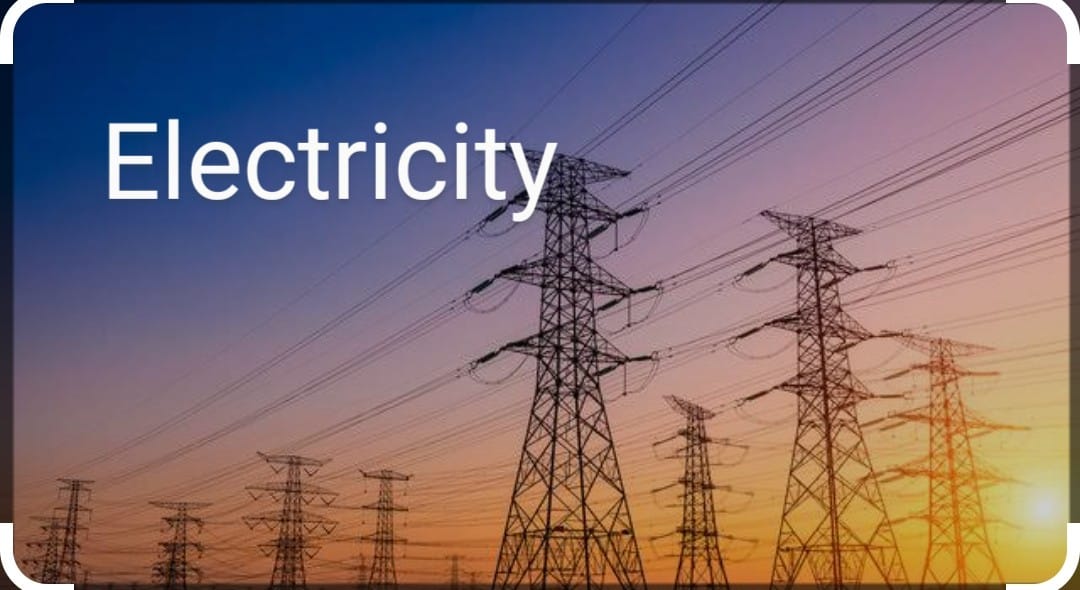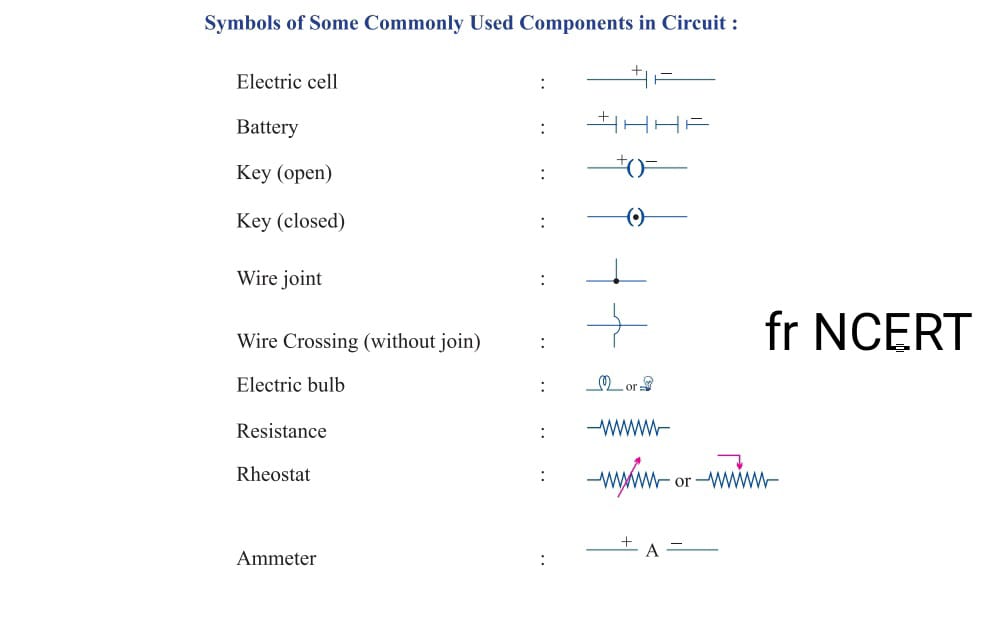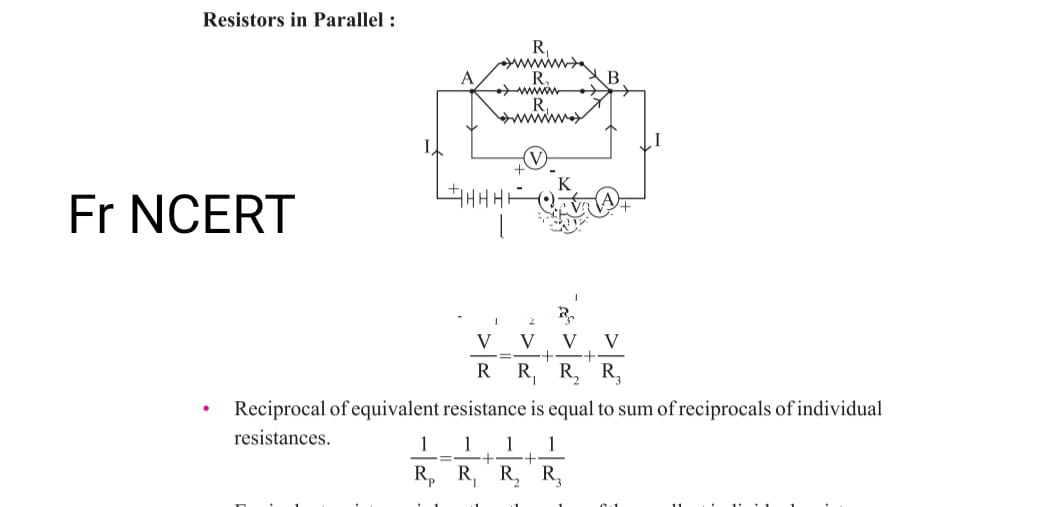ELECTRICITY
Electricity is very wide chapter for class 10 and 12 .This Chapter of Electricity cover the basic idea of electricity and along with some numerical examples

First of we must understand about charge which is the fundamental unit of atom .
Charge can be positive due to loss of electron negative charge due to gain of electron. like charge always repel each other while opposite charge attract each other.
unit of charge is coulomb
1 coulomb charge is charge present in 1.6* 10-18 electrons. Charge on one electron is negative value 1.6 ×10¯18 C
Q=ne
Q is the total charge
n is the number of electrons
e is the charge on 1 electron
CURRENT :
It is the rate of flow of charge through the conductor is called current flowing through the conductor.
current = charge/time
I= Q/t
S.I . unit of current is Ampere .
It is defined when one coulomb charge flowing through the conductor in one second than current flowing is one ampere.
1A= 1 C/s
1 mA= 10-3 A
1 micro A = 10-6 A
Current is measured by Ammeter which is connected in series.
It is to be noted that direction of flow of current is always opposite to the direction of flow of electrons.
POTENTIAL :
It is the amount of work done in bringing the unit postive charge from infinity to a point in the electric field.
POTENTIAL DIFFERENCE ;
It is defined as the work done in taking the unit charge from one point to another point in the electric field .
potential difference = work done /charge
V = W/Q
S.I. unit of potential difference is Volt .
It is defined as when one joule of work is done in taking one coulomb charge from one point to another than potential difference across the two points is one Volt.
one volt = one joule/ one coulomb
Potential difference is measured by the instrument Voltmeter which is connected parallel to the circuit .
It has high resistance ,cell is the simplest device to maintain the potential difference the current always flow from high potential to low potential.
SYMBOLS OF COMMON USED COMPONENT

OHM’S LAW:
The potential difference across the two points of the metallic conductor is directly proportional to current passing through the circuit provided that the temperature remains constant.
V∝ I
∝ =directly proportional
V=IR
R is constant called Resistance for the metal
V-I graph.

RESISTANCE (R)
It is the property of the conductor to resist the flow of charges through conductor.
S.I. unit of resistance is ohm (Ω) .
one ohm = one volt / one ampere
When potential difference applied across the circuit is one volt such that current flowing is one ampere than the resistance across the circuit is one ohm.
Rheostat :
It is a variable resistance component used for regulating the current without changing the sources of voltage.
FACTORS OF RESISTANCE :
Resistance of the conductors depends upon following factors ; resistance of conductor is
directly proportional to the length of the conductor , temperature of the conductor,
inversely proportional to the aera of cross section ,
and nature of conductor.
RESISTIVITY
It is defined as the resistance of the conductor in unit length per unit aera when flow of current is perpendicular to it’s opposite faces.
S.I: unit ohm-meter
let K be the resistivity ,
R be the resistance,
l be the length and
a be the area of cross section.
K=R .l / a
unit ohm -meter
Resistivity does not depend upon length or area of cross section it changes with the change in temperature, range of resistivity of metal to alloys is 10-8 to10-6 for insulator it is positive and very high.
COMBINATION OF RESISTANCE :
Resistances in series
when two or more resistance are connected end to end this arrangement is called series combination.
Effective Resistance is R= R1+R2+ R3 +——–. Current passing from the each resistance remain same, the equivalent resistance is more than each resistance.
Total Voltage = Sum of all Voltage V= V1+ V2+ V3
since V=IR V1=I.R1 V2=IR2 V3=IR3
V= IR1 +IR2 +IR3 >>>>>>>>>>
IR =I ( R1+R2+R3)
R= R1+R2 +R3+——–

RESISTANCES IN PARALLEL voltage. the total current is the sum of the current passing from each resistance of the circuit.
I= I1. The voltage across each resistance remain same and equal to applied+I2+I3 ——
Reciprocal of equivalent resistance is equal to sum of reciprocal of individual resistance.

IN the series circuit if one component fails the circuit gets broken and no component will going to work ,as different appliance require different amount of current which cannot be possible in series more over total resistance reduced than in series.
HEATING EFFECT OF CURRENT:
If electric circuit is having pure resistance ,when current passes through it which produces energy in the form of heat it is called heating effect of current of current.
E =P.T
heat produced H=VI.t
since V=IR
H=IR.I.t
H=I²Rt
JOULE’S LAW :
Heat produced in the resistors are directly to square of the current, resistance of the resistors and time for which current flowing through the conductors
H= I²Rt
Heating effect is desirable in devices like electric heaters, electric iron ,electric blub etc but not desirable in computer monitors , TV , computers ,refrigerators, etc.
In electric bulb most of the power is consumed by the filament which produce heat and l a small part of energy is radiated to light. The filament of the bulb is of tungsten as it is not oxidized at high temperature having high melting point of 3380 deg C .the bulb is filled with chemically in active gas Argon , Nitrogen to make the lfe of the bulb longer.
ELECTRIC FUSE :
It is a safety device which protect the electric appliances incase of short circuiting or overloading. It is made of pure tin or alloy of copper and tin. connected in series. with live wire having low melting point.
ELECTRIC POWER The rate at which electric energy is consumed dissipated in electric circuit.
power = potential difference . current
S.I unit of power is Watt = Volt . Ampere
1 Kilo watt hour = 3.6 .10 ^6 joule = 1 unit
Text Book Numerical
1. Calculate the amount of charge passed through the conductor when 10A current pass through the conductor in 2 minutes.
Current = Charge/ time in sec
Current ×time in sec = Charge ====>
Charge= 10×2×60 =1200 C
2 Calculate the number of electrons in one coulomb of charge
charge= number of electrons × charge of one electron
number of electron= charge ÷ charge of one electron
number of electron = 1÷ 1.6×10^-19 = 10 ^19÷1.6 = 6.25 x 10 ^18
3. How much Energy is given to each coulomb of charge passing through 6 V battery
potential = Energy consumed÷ charge====> Potential x charge = Energy Consumed
Energy Consumed= 6×1 = 6 Joule
3. Draw a Schematic diagram of a Circuit consisting of battery of three cells of 2V each , 5Ω,8Ω and 12Ω resistors in series and Key plug put ammeter in series and voltmeter at 12 Ω resistance find the total resistance , current passing through ammeter, Potential difference across 12Ω.
As resistance are in series so Total Resistance=Sum of resistance that are in series
R=R1+R2+R3= 5Ω+8Ω+12Ω= 25Ω
Current= Total Potential/Total Resistance
Current = (2+2+2)A÷ 25Ω = 6/25= .24 Ampere
Potential at 12Ω= current x Resistance = .24 x12 = 2.88 volt.
Read More :Magnetic Effect of Electric Current
Follow us on : Facebook
Follow us on: Instagram